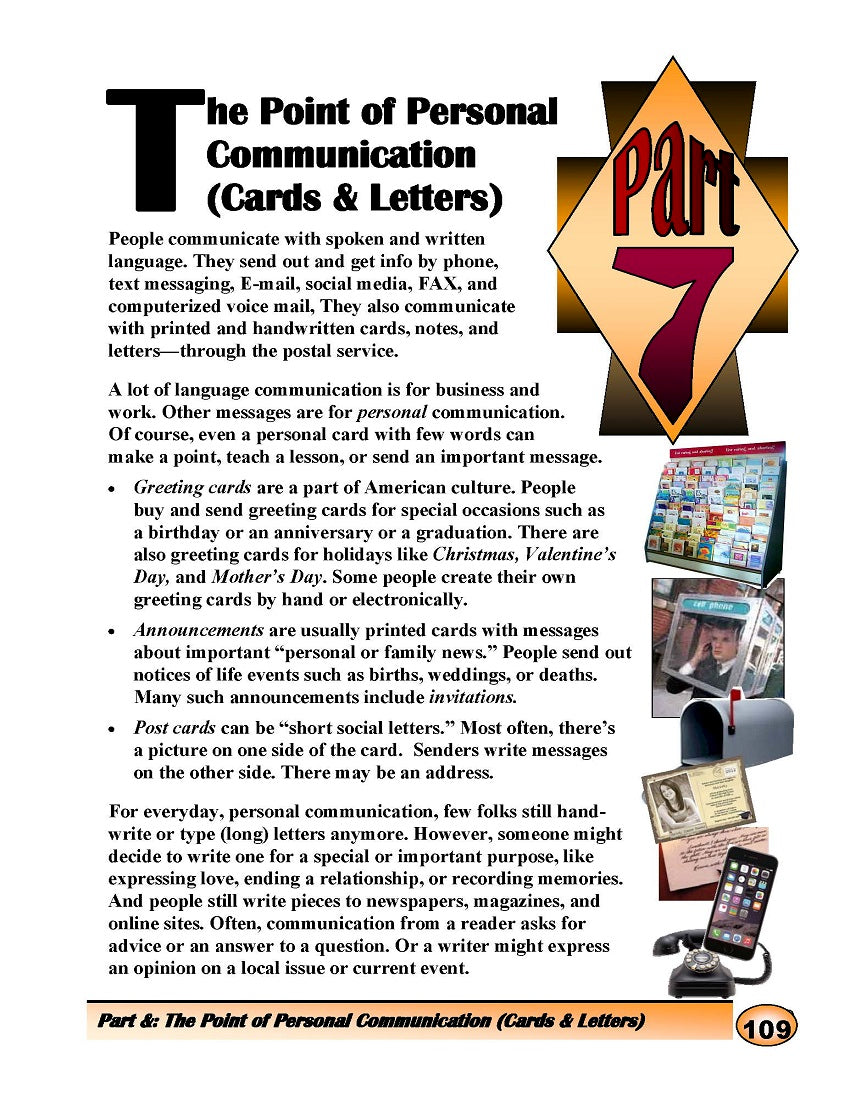1
/
of
1
Work/Life English
F-07.13 Pay Attention to & Build Skill with (Greeting & Post) Cards, Announcements, Letters, Notes & Reader Commentary
F-07.13 Pay Attention to & Build Skill with (Greeting & Post) Cards, Announcements, Letters, Notes & Reader Commentary
Regular price
$3.00 USD
Regular price
Sale price
$3.00 USD
Unit price
/
per
What’s the Point? Book One: Beginning to Read for Meaning. Part 7: “The Point of Personal Communication: Cards & Letters,” pages 109-122
14 Pages
Who It’s For: Language & Reading Teachers & Students; Whoever’s Interested in Better or Faster Perusal, Perception, & Grasp of “Ordinary, Commonplace Printed Content”
Why You Need It: Everyday people usually read “ordinary material”— like what comes in the mail, what’s posted around town, and what appears in the media and online. Though perhaps “peripheral” to academic reading skills & strategies, material on cards or fliers or in letters is likely to promote social communication.
What You’ll / They’ll Do:
[1] Flip through the 14-page Part 7: The Point of Personal Communication. Think about kinds of notes, cards, and letters you read or write. Picture them in your mind and/or sketch them quickly on paper.
[2] Read an explanation of “Greeting Cards.” Look at activity instructions. Get cultural info about cards & letters from Sidebars that attract your attention. Match 20 Greeting Card faces with their inside messages. While you’re in the mood, collect (some of) your old greeting cards to share—and/or look up variations of kinds of online messages that may be replacing them.
[3] Follow steps like or comparable to the above with “Announcements, Post Cards, & More.” Get the tone, purposes, and/or messages of 8 typical (simulated or real) Notices / Announcements. Decide how you might react to or what you might “do” with them.
[4] Read eleven examples of “Newspaper Letters” for content and purpose. To benefit from their content, answer the questions in the instructions on the preceding page. Create and share your own commentary on other “issues” suggested by these attempts to communicate. To do so, you can get help from Instructions for Exercise 7-D, “Letters, Notes, Blogs, Articles, & Other Reader Commentary.”
Couldn't load pickup availability


